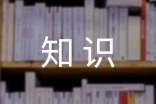- 相关推荐
外研版初一英语下册知识点总结
想要学好初一英语,英语语法的学习是一项重要的内容。以下是小编给你推荐的初一英语下册知识点总结,希望对你有帮助!

常用句式:
1, 情态动词+V原 can do= be able to do
2, Play+ the+ 乐器+球类,棋类
3, join 参加社团、组织、团体
4, 4个说的区别:say+内容Speak+语言
Talk 谈论 talk about sthtalk with sbtalk to sb
Tell 告诉,讲述 tell sb (not)to do sth
Tell stories/ jokes
5, want= would like +(sb)to do sth
6, 4个也的区别:too 肯定句末 (前面加逗号)
Either否定句末(前面加逗号)
Also 行前be 后
As well 口语中(前面不加逗号)
7, be good at+ V-ing=do well in 擅长于
be good for 对?有益 (be bad for对?有害)
be good to 对?友好 (good 可用friendly,nice,kind替换)
be good with和?相处好=get on/ along well with
8, 特殊疑问句的构成:疑问词+一般疑问句
9, How/ what about+V-ing?怎么样?(表建议)
10,感官动词(look, sound, taste, smell, feel)+adj/ like
11,选择疑问句:回答不能直接用Yes或者No,要从中选择一个回答
12,students wanted for school show(wanted表示招募,含有被动意义)
13,show sth to sb=show sb sth give sth to sb=give sb sth
14,help sb (to)do sth
Help sb with sth
With sb’s help= with the help of sb
Help oneself to 随便享用
15,be busy doing sth/ be busy with sth
16,need to do sth
17,be free= have time
18,have friends= make friends
19,call sb at +电话号码
20,on the weekend= on weekends
21,English-speaking students 说英语的学生(带有连词符,有形容词性质)
22,do kung fu表演功夫
what句式:
1, 问时间用what time或者when
At+钟点 at 7 o’clockat noon/ at night(during/ in the day)
On+ 具体某天、星期、特指的一天on April 1ston Sundayon a cold winter morning
In +年、月、上午、下午、晚上
2, 时间读法:顺读法
逆读法:分钟≤30用past five past eight(8:05) half past eight(8:30)
分钟>30用toa quarter to ten(9:45)
整点用 ?o’clock 7 o’clock(7:00)
3,3个穿的区别:wear 表状态,接服装、手套、眼镜、香水等
Put on 表动作,接服装
Dress 表动作,接sb/ oneselfget dressed穿衣
3, 感叹句:How+adj+主谓!
How+adj+a/an +n单+主谓!
What+ a/an +adj+ n单+主谓!
What+ adj+ n复/ 不可数+主谓!
4, from?to?
5, be/ arrive late for
6, 频度副词(行前be 后)
Always usuallyoftensometimes seldom hardly never
7,一段时间前面要用介词for for half an hour for five minutes
8, eat/ have? for breakfast/ lunch/ dinner/ supper
9, either?or
10,a lot of=lots of
11,it is +adj+for sb +to do sth (adj修饰to do sth)It is important for me to learn English.
it is +adj+of sb +to do sth (adj修饰sb) It is kind/ friendly/ nice of you to help me.
疑问句句式:
1, 疑问词
How 如何(方式)
how long 多长(时间)答语常用“(For/ about +)时间段”
how far多远(距离)答语常用“(It’s +)数词 +miles/ meters/ kilometers”
how often多久(频率)答语常用“Always/ often/ every day/?”或 “次数+时间”等表频率的状语
How soon多快,多久以后,常用在将来时中。答语常用“in +时间段”
how many多少(接可数名词)how much(接不可数名词)
why为什么(原因) what什么when何时
who谁 whom谁(宾格)(针对宾语提问也可用who) whose谁的
2, 宾语从句要用陈述句语序
3, Stop sb from doing sth
Stop to do 停下来去做其他事
Stop doing 停止正在做的事
4, what do you think of/ about= how do you like你认为?怎么样?
5, He is 11 years old.
He is an 11-year-old boy.
6, many students= many of the students
7, be afraid of sth be afraid to do sth worry aboutbe worried about 担心
8, play with sb
9, come true
10,have to do sth
11,he is like a father to me (like像)
12,leave离开 leave for 出发前往某地
13,cross 是动词 across是介词
14,thanks for +n/ V-ing
Thanks for your help/ thanks for helping me.
Thanks for your invitation/ thanks for inviting/ asking me.
Thanks to幸亏,由于,因为
15,4个花费:人+spend/ spends/ spent+时间/钱+(in)doing sth/ on sth
人+pay/ pays/ paid +钱+for sth
It takes/ took sb +时间+to do sth
物+cost/ costs/ cost +sb +钱
16,交通方式
●用介词。在句子中做方式状语。
①by +交通工具名词(中间无需任何修饰)
By bus/ bike/ car/ taxi/ ship/ boat/ plane/ subway/ train
②by +交通路线的位置
By land/ water/ sea/ air
③in/ on +冠词/物主代词/指示代词 +交通工具名词
In a/ his/ the car
On a/ his/ the bus/ bike/ship/ train/ horse/ motorbike
④on foot 步行
●用动词。在句子中做谓语。
①take + a/ the +交通工具名词
take a bus/ plane/ ship/ train
ride a bike
②walk/ drive/ ride/ fly to(后面接here,there,home等地点副词时,省略介词to。)如步行回家:walk home 17,名词所有格
一般情况加’s Tom’s pen
以s结尾加’ the teachers’ office ten days’ holiday
表示几个人共同拥有,在最后一个名词后加’s Mike and John’s desk
表示每个人各自拥有,在每个名词后加’s Mike’s and John’s desks
第九单元知识点:
一.重点单词和词组
over prep.在……期间
project n.课题;作业;项目
test n.测验;测试
false adj.错误的;假的
number n.号码;编号
geography n.地理学;地理
spend v.度过;消磨(时间)
most pron.&adj. 大部分(的);最多(的)
mixture n.混合;混杂;混合物
their pron.他们的;她们的;它们的
little adj.很少的;少量的
cook v.烹调;烹煮
change v.变;改变
everyone pron.每个人(都);人人(都)
anything pron. 任何事(物);什么事(物)
haveaparty 举行晚会
goshopping 去购物
dosomereading 读书
talkshow 访谈节目
二.重点难点讲解
1.Whatdidyoudoovertheweekend,Lucy?
这是由疑问词what引导的特殊疑问句,表示询问“干什么?”句型结构与一般现在时的特殊疑问句一样:
疑问词+一般疑问句.例如:
Howmuchdidyoupay? 你付了多少钱?
Over在这个句子里表示“在……期间”,例如:
WillyoubeathomeoverChristmas?圣诞节期间你在家吗?
2.Whataboutyourfriend?
whatabout=howabout,用以询问消息或征求意见,表示“怎么样”.例如:
I’mhungry.What/Howaboutyou?我渴了,你呢?
3.little,alittle,few,afew
little和few表示否定,意思为“很少”或”几乎没有”;alittle和afew则表示肯定,意思为“有一点,有一些”.不过需要注意区别的是:
little和alittle修饰不可数名词.few和afew修饰可数名词.例如:
Thereislittleinkinmybottle,canyougivemealittleink?
我的瓶子里没有墨水了,你能给我点儿墨水吗?(不可数名词)
Hehasfewfriendshere,hefeelslonely.他这里没朋友,他感觉寂寞。(可数名词)
Thereareafeweggsinthebasket.篮子里有几个鸡蛋。(可数名词)
三.语法讲解
一般过去时
一般过去时表示过去发生的动作或存在的状态,经常与一些表过去的时间状语搭配,如:yesterday,lastweek,lastOctober,ago等.其句型结构与一般现在是完全相同。
在一般过去时态的陈述句中,动词都要变成动词的过去式。如:
Shewasatworkyesterday.昨天她在工作。
Heboughtanewspaper.他买了一份报纸。
在一般过去时态中,当动词为行为动词时,须用动词的过去形式,简称为“过去式”,动词的过去式分为规则动词的过去式和不规则动词的过去式。规则动词的过去式的构成规则如下:
规则动词过去式的构成
规则动词的读音
常见的不规则动词有:
am/is→was are→were come→came say→said
go→went have→had see→saw put→put
do→did get→got eat→ate take→took
There be的句子结构:
There be是一个肯定句的形式为:There be +名词(单数或复数)+地点状语或时间状语。
be动词单复数的确定,看be后边第一个名词,当所接主语为单数或不可数名词时,be动词形式为is;当所接主语为复数名词时,be动词为are;当be动词后接两个以上主语时,be动词与最临近主语保持数上的一致。意思为
There is an eraser and two pens on the desk.
There are two pens and an eraser on the desk.
(1)there be的否定句,即在be的后面加上not。
否定形式为:There be + not + (any) +名词+地点状语。
There is not any cat in the room.
There aren't any books on the desk.
(2)there be句型的疑问句就是将be提到句首:Be there + (any) +名词+地点状语?肯定回答:Yes, there is /
are.否定回答:No, there isn't / aren't.
Is there a dog in the picture?
Yes, there is.
Are there any boats in the river?
No, there aren't.
(3)特殊疑问句:How many . . . are there (+地点状语)?
回答用There be . . .
There's one. / There are two / three / some . . .
有时直接就用数字来回答。One. / Two . . .
How many students are there in the classroom?
There's only one. / There are nine.
(4)如果名词是不可数名词,用:How much +不可数名词+ is there +地点状语? Eg:How much water is
there in the cup?
How much food is there in the bowl?
【外研版初一英语下册知识点总结】相关文章:
外研版小学英语知识点总结12-08
外研版初一英语的教学计划07-01
外研版高一英语必修一知识点总结11-26
外研版高一英语必修一知识点总结10-24
外研版高一英语必修一知识点01-27
外研版初一英语暑假作业答案11-24
外研版初二英语下册期末试题及答案12-01
外研版初一英语暑假作业及答案六篇11-24
外研版三年级英语下册期中试卷04-21